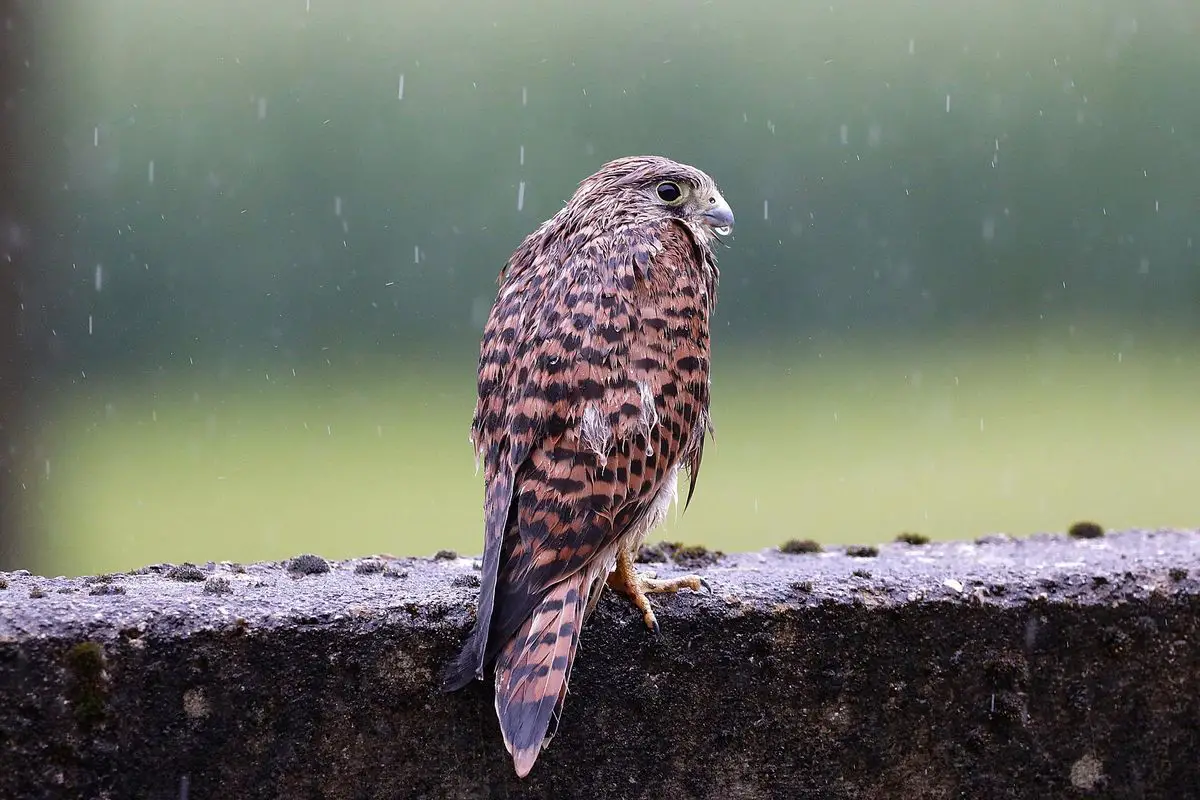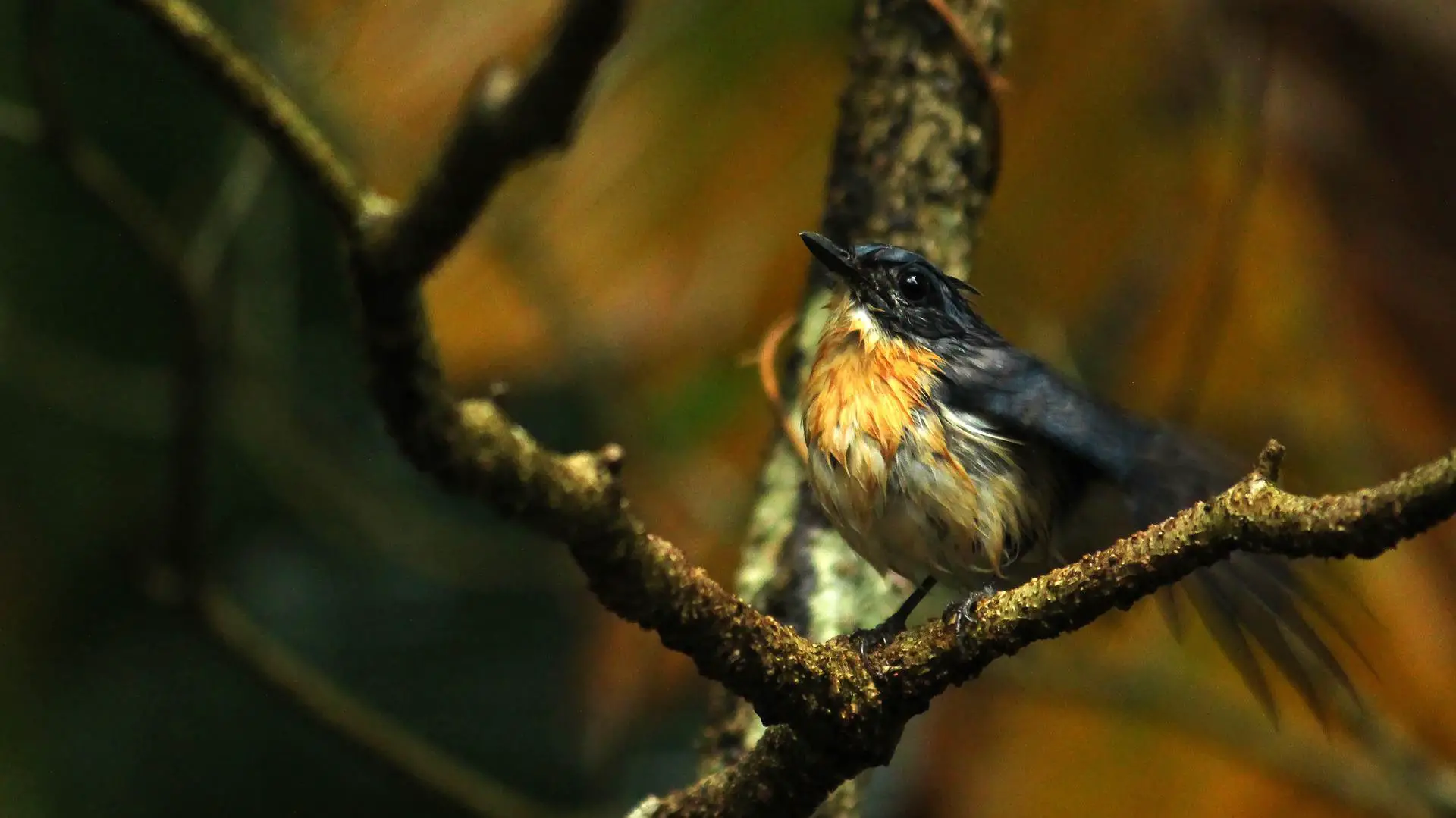Where Do Birds Go When It Rains? (Key Facts To Know)
Have you ever wondered where a bird goes when it’s raining? It’s not really the sort of thing you would normally think about, but it’s actually an interesting question.
There are several reasons why birds prefer not to fly when it’s raining, and different species of birds will do different things to avoid the rain. So just where do birds go when it rains?

If you’ve ever wondered where birds go during bad weather, then you’re in luck – this article has the answers to all your questions.
In this guide, we’ll teach you everything there is to know about how birds behave in the rain, from where they go to stay out of the rain to why they avoid it in the first place. So read on, and learn a bit more about where birds go when it’s raining!
Why Don’t Birds Fly In The Rain?
First things first – in order to know where birds go when it’s raining, we need to understand why they don’t fly in the rain in the first place.
As mentioned before, there are a couple of reasons why birds don’t fly in the rain. These range from how the rain affects their bodies to other issues like poor visibility and strong winds.
Birds don’t like flying in the rain because their feathers get wet and heavy.
They also need to be able to see what’s going on around them, so if they can’t see anything through the raindrops, they won’t be able to spot potential predators or prey.
To make matters worse, raindrops often form into large droplets that fall onto the birds’ bodies, which makes them even heavier than normal.
This means that the birds end up struggling to keep airborne while trying to navigate through the rain.
Throw in the strong winds and dark skies that typically accompany the rain, and it’s not hard to understand why birds don’t want to fly when the weather’s bad.
It’s important for birds to be able to see clearly to survive, so they have evolved with eyes that work well in low light conditions.
If they can’t see well enough, they may miss something crucial, such as food, their destination, or even a predator attacking from behind.
Because rain makes their feathers waterlogged, this also limits their maneuverability and their ability to avoid threats in the air.
Because of how dangerous flying in the rain can be, birds will typically look for shelter in a safe and dry place until the bad weather passes.
Where Do Birds Go When It’s Raining?

Now that we understand some reasons why birds avoid flying in the rain, we can take a look at where they actually go.
Just like their reasons for staying out of the rain, the places birds go in bad weather can be pretty varied.
Some birds will choose to hide under trees, others will head indoors, and still others will seek refuge in buildings.
But whatever the case may be, most birds will find somewhere safe and dry to wait out the storm.
The best way to determine where birds go in bad weather is by listening. You might hear a few birds chirping away in the distance, or maybe you’ll notice flocks of birds gathering together near a tree line.
Either way, these are signs that birds are seeking shelter from the elements.
While many birds will simply hunker down under trees or inside bushes, others will use buildings and other structures to provide better protection.
For example, many birds will use the eaves of a building’s window to take shelter, or below the overhang of a roof.
Bridges (especially railway bridges) are a great place for birds to wait out the rain, either sitting on the ground or roosting in the spaces between the girders below the bridge.
If you’re passing under a bridge during the rain, look up – you’ll probably see plenty of birds there.
Waterbirds such as ducks and cormorants need to take a different approach. If they are far out to sea or in the middle of a large body of water during the rain their options for shelter might be limited.
However, if they’re close to land, they can usually find cover on the shoreline. Many species of shorebird will nest along the edge of the beach, using the sand dunes as a protective barrier against the wind and waves.
Other shorebirds will use the grassy areas next to the ocean, or the reeds lining the shore. If there are any trees or buildings within a short flying distance, then waterbirds will try to find shelter here.
Most species of waterbird can withstand being out on the water during rain, but it still isn’t ideal for them.
How Can I Help Birds During The Rain?
If you want to help birds stay safe and healthy when it’s raining, there are a couple of things that you can do.
One of the best things to do is to create a shelter for them; this can be put on your roof or in a garden, as long as you have the space for it.
All you need to do is make sure that the structure is big enough for birds to enter and exit easily.
You can use old furniture or even just make your own with some pieces of wood. Make sure there is a good amount of cover from the rain, and consider raising it off the ground.
Another thing you can do is keep an eye out for birds that appear to be struggling; if you spot one of these individuals, try and get them shelter, along with some food and water.
If the bird is injured, you can take it inside out of the rain and call a vet or rescue for advice on what to do next.
This doesn’t have to be when the rain is going on – if you’ve just had a large storm, you might want to check outside to make sure there aren’t any injured or exhausted birds on the ground.
Final Thoughts
So now you know a bit more about where birds go when it’s raining! Birds don’t like the rain for several reasons, and they will typically try to find shelter as soon as they know it’s going to rain.
They don’t just magically disappear; in fact, you’ve probably passed plenty of birds when it’s raining without even noticing.
So next time it’s raining, keep an eye out for sheltering birds – you might be surprised by where they can be hiding!
